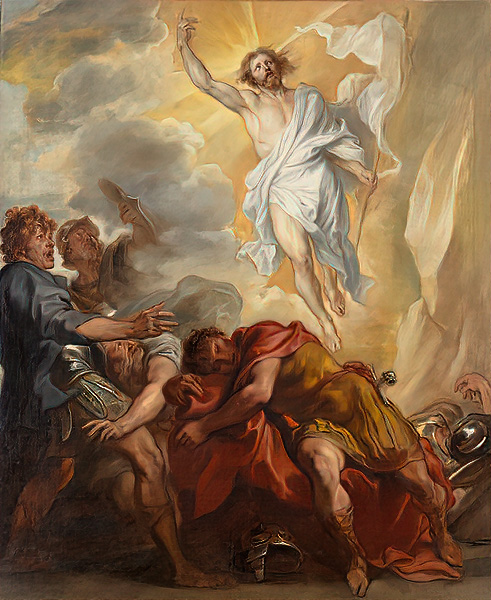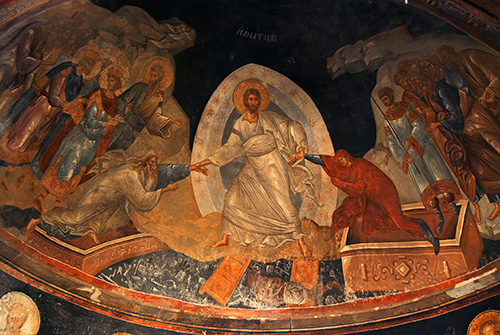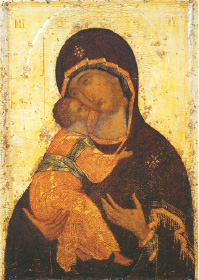What do a Dutchman living in France, an Englishman living in Ireland and a Frenchman living on a Pacific atoll have in common? I suggest two attributes. The first is – they became better known, and one might say ‘famous’ after they had died!
The Dutchman living in France, Vincent Van Gogh, never sold a painting in his lifetime. He would send them to his younger brother Theo, an art dealer in Paris. Theo sent painting materials as well as monthly financial support.
The Englishman living in Ireland, Gerard Manley Hopkins had none of his poems published in his lifetime. Hopkins would send his poems to his long-time friend Robert Bridges. Bridges became literary executor of Hopkins’ poems, which he kept collectively from the public until 1918, twenty-nine years after his friend’s death, when he edited ‘Poems of Gerard Manley Hopkins’ for publication.
The French man living on a Pacific atoll was Peter Chanel. Father Peter Chanel, a member of the newly formed religious congregation known as the Society of Mary was one of an early group of Catholic missionaries to the South West Pacific which set out from France in December 1836. Father Chanel and a Marist catechist Brother Marie-Nizier were placed on the island of Futuna, north of the Fijian Islands, in November 1837. They both laboured there for three and a bit years. It was a difficult mission: learning the language, coping with isolation, different foods and customs.
On 28th April 1841 Peter Chanel was killed by a group of warriors incited by the leading chief of Futuna, in hatred of the Faith which threatened his control over the people. Following Peter Chanel’s death, the entire island of Futuna converted to the Catholic Faith.
The second common attribute may be more helpful for us – they did their best work away from home!
In a book titled, “The Hero with a Thousand Faces” the author, Joseph Campbell presents a ‘monomyth’. Campbell worked in comparative mythology and comparative religion. Campbell explores the theory that mythological narratives frequently share a fundamental structure. The similarities of these myths brought Campbell to write his book in which he details the structure of the monomyth. He calls the motif of the archetypal narrative, “the hero’s adventure”. The first step in this ‘monomyth’ is that hero/heroine leaves home – that is, leaves a place of safety, security, warmth, nourishment, and familiar social relationships.
A classic example of leaving home is found in J.R.R. Tolkien’s, “The Fellowship of the Ring” as Bilbo Baggins sets off, ‘Well, that’s that,’ he said. ‘Now I’m off!’ Bilbo chose his favourite stick from the stand; then he whistled. Three dwarves came out of different rooms where they had been busy.
‘Is everything ready?’ asked Bilbo. ‘Everything packed and labelled?’
‘Everything,’ they answered.
‘Well, let’s start then!’ He stepped out of the front door.
It was a fine night, and the black sky was dotted with stars. He looked up, sniffing the air. ‘What fun! What fun to be off again, off on the Road with dwarves! This is what I have really been longing for, for years! Goodbye!’ he said, looking at his old home and bowing to the door. ‘Goodbye, Gandalf!’
‘Goodbye, for the present, Bilbo. Take care of yourself! You are old enough, and perhaps wise enough.’
‘Take care! I don’t care. Don’t you worry about me! I am as happy now as I have ever been, and that is saying a great deal.
Might those words been on the lips of Peter Chanel as he walked up the gangplank onto the Delphine and sailed from Le Havre, “well let’s start then!.”
The feast of St. Peter Chanel, maybe less about his martyrdom, which few of us will be in a such a position; rather the feast is about daring to leave the security of home – “ well, let’ start then”, and choosing our favourite stick, stepping out the front door, and with Bilbo we sing, ‘the road goes ever on and on, down from the door where it began!”





